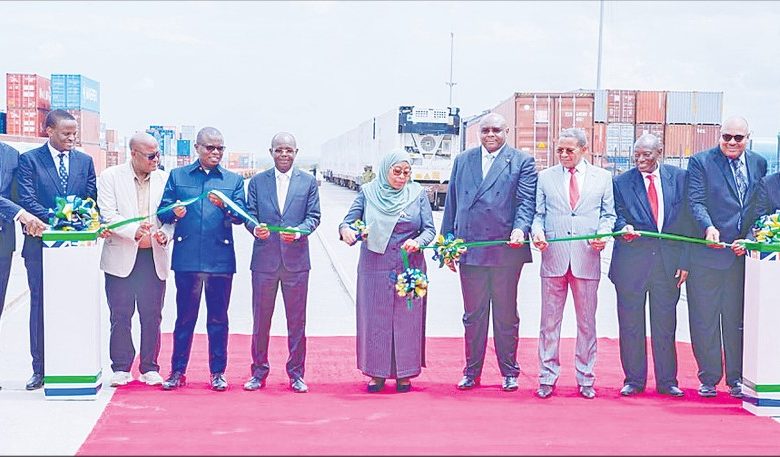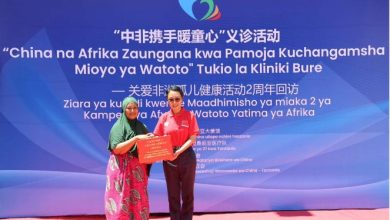How integrated logistics will drive Dira 2050

IN July this year, President Samia Suluhu Hassan launched the Tanzania Development Vision 2050 (also known as Dira 2050) which aims to make Tanzania an inclusive, resilient and a high middle-income economy in the next 25 years.
The ambitious plan, which is a continuation of Vision 2025 which was launched in the year 2000, identifies five key “catalytic drivers” intended to propel the nation toward becoming a 1 trillion US dollars economy by 2050.
The Vision will be implemented through investment in manufacturing, agriculture, services, mining, tourism and construction, led by private sector growth, improved business climate and inclusive participation of women, youth and people with disabilities.
The five drivers which have been identified in the plan include integrated logistics, science and technology, Energy, Research & Development (R&D) and Digital transformation. These drivers aim to enhance productivity, innovation and competitiveness across all sectors of the economy.
The main objective of this article is to shed more light on integrated logistics and what it encompasses as one among one of the pillars of the economy. Integrated logistics refers to the seamless coordination of goods, people, services and information across the supply chain—from production to delivery—leveraging efficient infrastructure and digital systems.
In recent years, Tanzania has made notable progress in enhancing its logistics capabilities through strategic infrastructure development, structural reforms and technological advancements, leveraging its prime geographical position as a gateway to Eastern and Southern Africa.
ALSO READ: TZ, Kenya ready for Dar Leopards rugby tourney
Key developments include significant investments in development of ports, road networks, the modern Standard Gauge Railway (SGR) as well as expansion and modernisation of airports. These undertakings have strengthened domestic infrastructure and enhanced crossborder connectivity thus facilitating regional trade and economic integration.
The Dira 2050 points further that establishment of One-Stop-Border Posts (OSBPs) has significantly streamlined cross-border trade while the integration to digital technologies has improved processing of documents, inventory management, tracking of shipment and overall supply chain efficiency.
These advancements position Tanzania as a vital logistics hub in the region, fostering sustainable economic growth. Despite these achievements, more work still needs to be done to reduce operational costs and delays. The plan notes with concern that currently, logistics account for 35–45 per cent of total import costs, including insurance and freight, which ranks Tanzania among the most-costly globally.
These elevated costs are partly due to prolonged waiting and offloading times caused by insufficient and inconsistent transport and logistics networks.
Aspirations of the Dira 2050 is for Tanzania to become a premier gateway for Eastern and Southern Africa, leveraging its strategic geographical location and maximising returns on heavy investments in trade infrastructure; enabling seamless cross-border trade.
It also seeks to make Tanzania a thriving transit trade gateway that positions the nation as a leading logistics and trade hub for East and Central Africa.
What is more, the new plan looks forward to an integrated logistics network with a competitive multimodal transport system and modernised infrastructure, that aligns the country’s economic corridors to support efficient domestic and international trade.
The litany of aspirations also include high-quality and reliable logistics providers delivering world-class services at competitive prices by embracing advanced digital technologies to enhance efficiency and seamless information flow across the value chain.
In order to achieve the Dira 2050, there should also be a transparent and efficient environment that streamlines customs, reduces bureaucracy and roadblocks, embraces logistical advancements and enforces compliance with international standards.
Last but not least is an inclusive and accessible logistics network with infrastructure designed to support people with disabilities, ensuring equal participation and seamless mobility for domestic and international travel and trade.
Given the aspirations of the Dira 2050 through the five drivers of the economy, the sixth Phase Government under President Samia Suluhu Hassan has undertaken a number of initiatives aimed at placing Tanzania as a logistics hub in the region.
ALSO READ: Tribute to first native Attorney General Mark Bomani
Huge investments have been made to improve ports along the Indian Ocean through projects such as Dar es Salaam Maritime Gateway Project (DMGP) to improve the efficiency and capacity of Tanzania’s Port of Dar es Salaam, including deepening berths, widening the channel and constructing a new multipurpose berth.
This project, which also involves institutional strengthening, aims to transform the port into a worldclass facility, increase cargo handling capacity and boost the economic development of Tanzania and the surrounding landlocked countries.
There have also been upgrading projects in other ports such as the Tanga Port upgrade, costing over 400 billion Tanzania shillings which has significantly enhanced the port’s infrastructure, including dredging the harbour and constructing new berths.
On the other hand, the Mtwara Port upgrade project focuses on expanding its capacity and modernising its infrastructure to become a key logistics hub for southern Tanzania and the surrounding region, including Malawi, Zambia and Mozambique.
Apart from coastal harbours, the government of Tanzania through the Tanzania Ports Authority (TPA) is also undertaking construction of new ports in inland lakes such as Kalema port in Lake Tanganyika as well as other ports in Lake Victoria and Lake Nyasa.
Apart from such undertakings, plans are also underway to construct a mega port in Bagamoyo which will complement and reduce congestion of cargo at Dar es Salaam port. Just recently, Tanzania continued to cement its position as a regional transport and logistics hub with the grand launching of Kwala International Logistics Centre in the Coast region aimed at facilitating smooth clearance of cargo at the Dar es Salaam port.
Located 90 kilometres from the Dar es Salaam harbour and 15 kilometres from the Dar es Salam-Morogoro Highway, Kwala dry port covers a total area of 502 hectares which is almost five times the size of Dar es Salaam port.
The Kwala dry port is expected to significantly reduce time and transport costs for local and foreign businesspersons using the harbor to import or export cargo.
Speaking during the launching of the facility on July 31, this year, President Samia Suluhu Hassan was upbeat that the launching of the facility will facilitate transport and logistic services in addition to widening business opportunities for Tanzanians and citizens of neighbouring countries.
President Samia noted that the Kwala dry port seeks to place Tanzania as a regional transport and logistics hub in East and Central Africa as the country takes stage in the African Continental Free Trade Agreement (AfCFTA).
“Kwala dry port will facilitate smooth transportation of cargo to and from DRC, Zambia, Burundi, Rwanda, Malawi and Uganda and as a result will boost competitiveness of the Dar es Salaam port in the region,” she stated.
As part of connecting the country through railway lines, President Samia revealed that plans are underway to connect Kwala dry port with Tanga port which is 256 kilometres away and the envisaged Bagamoyo port which is 60 kilometres away. “Plans are underway for construction of a deep-water port in Bagamoyo capable of handling modern vessels carrying up to 6,000 containers at a go.
The new port of Bagamoyo will also be connected to Kwala dry port,” she revealed. With the integration of rail and maritime services, cargo delivery time from Dar es Salaam port to Kampala, Uganda, is expected to reduce from between 15 and 16 days to just five to six days, she explained.
President Samia was equally impressed that the volume of cargo handled at the Dar es Salaam port has increased from 23.69 million tonnes in 2023 to 27.76 million tonnes in 2024. Likewise, the number of ships which docked at the Dar es Salaam port during the period under review increased from 1,860 to 1,990, she observed.
It is thus fair to note that improvements in ports, airports, roads as well as railway networks will not only place Tanzania as a logistics hub but play an important role in propelling the country to achieve Dira 2050.





